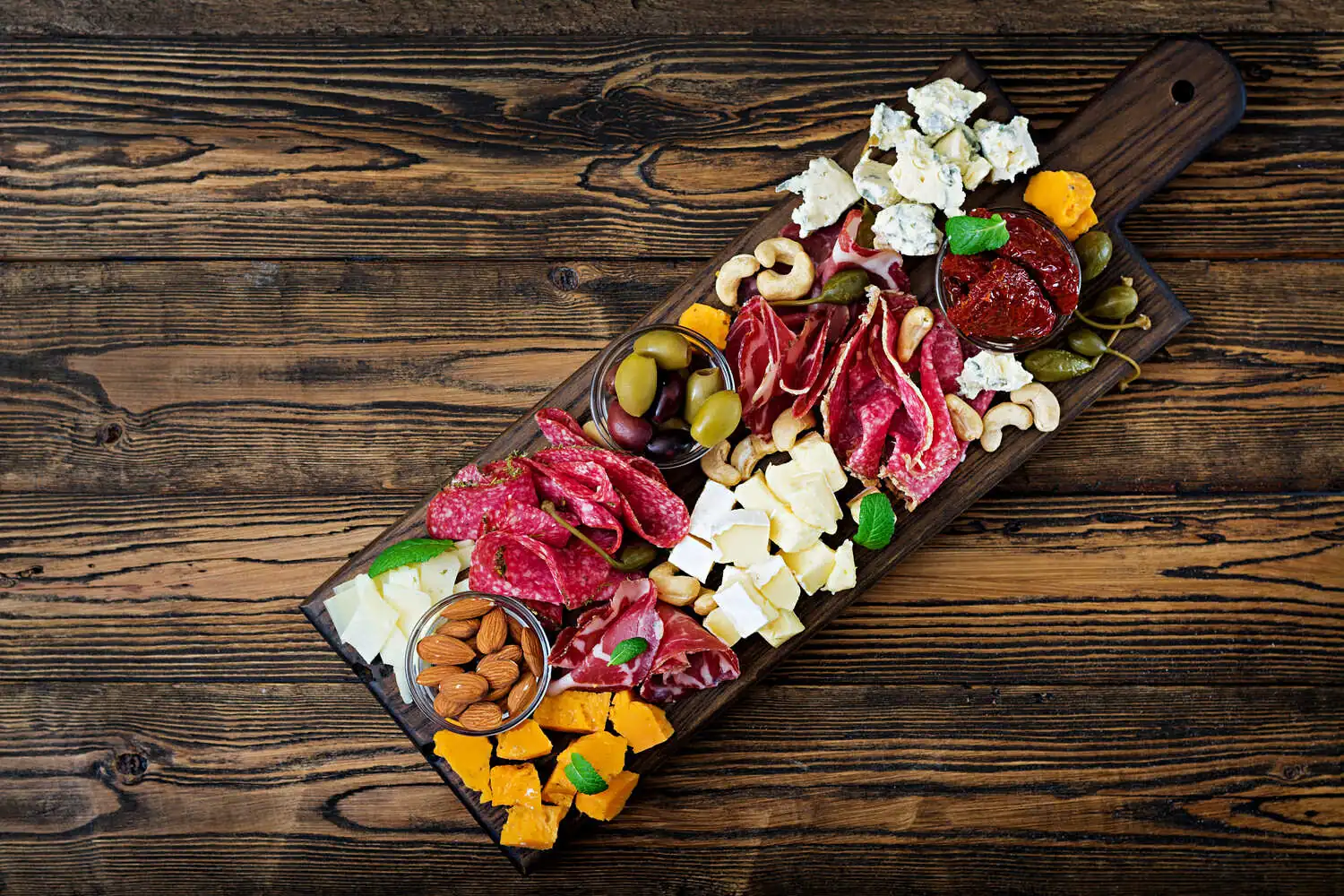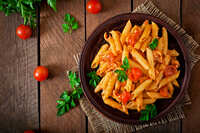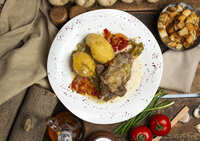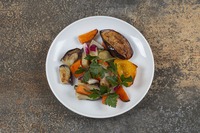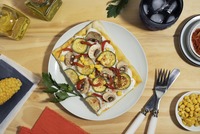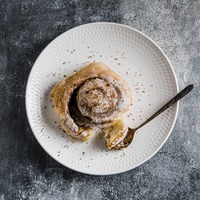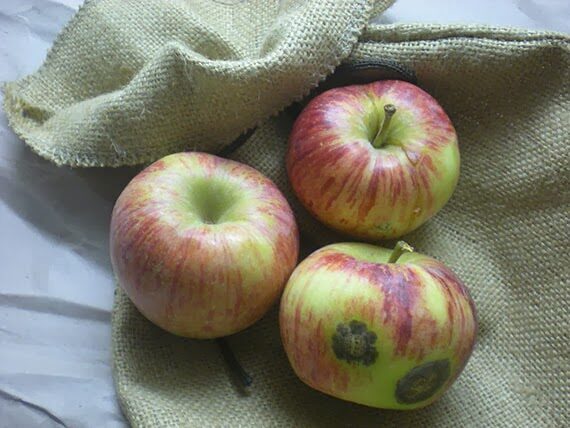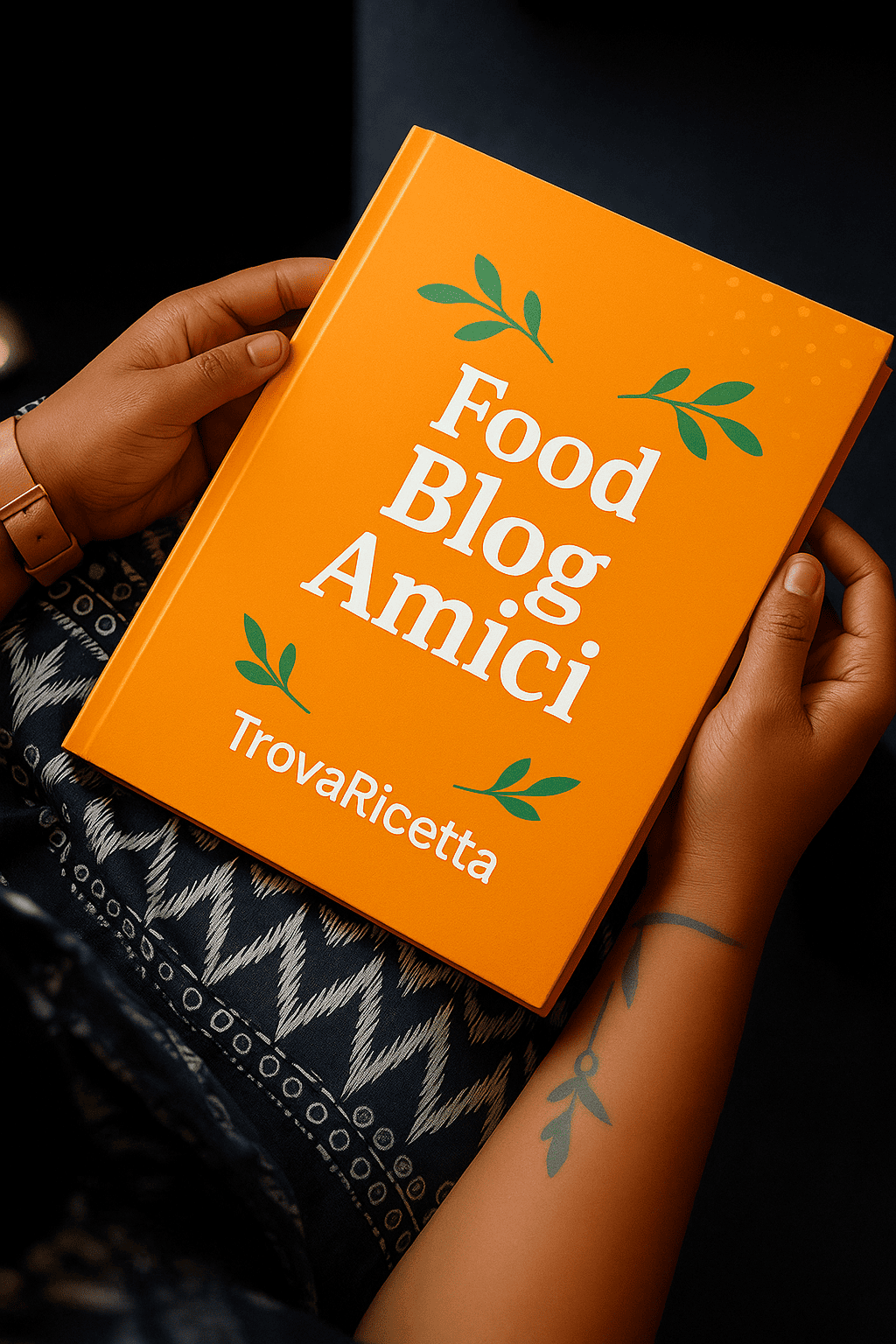First, the ingredients listed are: arance, cioccolato, farina, formaggi, glassa, malvasia, mele, pan di spagna, pasta tipo tagliatelle all’uovo, patate, pomodori, prezzemolo, sugo di pomodoro, uova, vaniglia, zucchero.
Looking at the context about the Sunday lunches, some key points emerge. The main dishes mentioned are tagliatelle with sugo di pomodoro dolce, cotolette fritte, patate fritte (specifically patate americane), and the desserts like pan di Spagna pastina with glassa, using citrus from Contra (which are arance vaniglia). Also, the recipe should invoke nostalgia with family memories. The nonna didn’t cook much herself, but the helper (tata Annamaria) made these dishes.
Emotions and significance: The meal is comfort food tied to family gatherings, the sensory details of ingredients like the sweet potatoes, vanilla oranges, chocolate in pastries, the wine (malvasia). Also, the use of vanilla and honey (maybe “mele miali” refers to a type of apple with honey infusion?). Wait, “mele miali” actually might be a typo, but “miali” is “miele” (honey), but in the context, it’s “mele miali” which might refer to a local Sicilian orange variety, but the mention of oranges (arance) and mele (apples) in the storied passage. Hmm, need to check how to incorporate that, maybe as a side or part of the dessert?
The key elements from the context for the recipe:
Main course is tagliatelle with sugo dolce (tomato sauce), cotolette (maybe breaded?), fritte (fried), patate americane (sweet potatoes?), which were used in the meal. The dessert is cuccidati or pastine with pan di spagna, glassa (icing possibly with chocolate or vanilla flavors), and Malvasia wine as a drink component.
Wait, the sugo is described as “dolcissimo,” so a sweet tomato sauce? Maybe slightly sweetened. The cotolette could be breaded and fried. The patate fritte should be the sweet potatoes (patate dolci, americane here). The oranges and apples might be part of a side or an accompaniment? The oranges from Contra in winter, which could be a marmalade or a part of the syrup?
The dessert involves “pastine” which are small cakes, described as cupcakelike, so using pan di spagna (genoise), glassa (sugar icing, maybe chocolate, vanilla, etc.). The Malvasia wine is served as a drink, so maybe as a suggestion with the dessert.
So structuralizing the recipe steps:
The main course would be the tagliatelle with sugo, cotolette, and fried potatoes. The dessert is the pastina cakes with glassa and maybe some citrus elements. The vaniglia and arance vaniglia might be part of the dessert, perhaps in the sponge cake or the frosting.
Possible steps:
For the pasta: cooking the tagliatelle, preparing the sweet tomato sauce (maybe adding sugar?), frying the cotolette (eggs, breadcrumbs, etc.), frying sweet potato chips (or mashed?), and the pastina: making genoise cakes with vanilla, baking, then icing them with chocolate or vanilla glaze, and maybe using orange zest (arance) ?
Alternatively, the oranges might be a side, like orange segments, but that’s unclear. The key is to map the ingredients and context into the recipe structure.
Also, the prezzemolo is mentioned, but in the ingredients but according to the instructions, I have to ignore non-pertinent info. The prezzemolo was used for a car sickness remedy, not for cooking, so exclude.
Need to ensure that all listed ingredients are used: vaniglia, zucchero, farina, uova, pasta, etc. The “sugo di pomodoro” is there. The forms like cioccolato would be in the glassa of the pastina.
Also, the context says the dessert is “pan di spagna” with glassa, so the cakes are genoise-based. The Malvasia is perhaps incorporated as a wine reduction? Or just served alongside?
Now, structure the intro as per the instructions. The intro must start with “La ricetta I pranzi della domenica” and mention flavors, how it’s consumed, the nostalgic aspects, and key ingredients. Use bold for ‘ricetta’, ‘I pranzi della domenica’, ‘piatto’.
Then list the preparation steps in bullet points (HTML unordered list). Need to make sure each step is a clear bullet point detailing each part: pasta, cotolette, patate, dessert.
Make sure to not use markdown, but the user says use
- etc., so I need to write them correctly.
Check for all ingredients mentioned. Mele miali could be a variety of apple or citrus? But in the ingredients, only mele, arance are listed. Maybe “mele miali” is the apples, and “arance vaniglia” are oranges with vanilla notes. Maybe the dessert’s vanilla comes from the vanilla ingredient in the list, so the vanilla flavor in the cake or dressing.
Steps outline:
1. Prepare tomato sauce (sugo dolce): cook tomatoes, add sugar, etc. for a sweetish flavor.
2. Cook tagliatelle, toss with the sugo.
3. Make cotolette: breaded with eggs, farina, maybe cheese? (Since formaggio is an ingredient, perhaps the cotolette have cheese inside or in the coating. Wait, the story mentions cotolette fritte, which are typically breaded, maybe wiener Schnitzel style. But Italian-style cotolette might have meat like veal, chicken, or pork. But the ingredients include uova, farina, possibly formaggio. Maybe the breading includes formaggio? Not sure, but need to include the formaggio as per ingredients. Alternatively, could be grated cheese in the meat mixture. But the main dishes in the context are the pasta, cotolette, and patate. Maybe the formaggio is part of the meat dish.4. Fry the cotolette in olive oil until crispy.
5. Patate fritte: slice sweet potatoes (patate americane), toss in flour/egg for crispy? Or just fry them with some seasoning.
6. Prepare the dessert: make genoise base (uova, zucchero, farina, vaniglia), bake, cool, then apply glassa (icing with cioccolato or zucchero, maybe chocolate or vanilla flavors. “Glasse cioccolato, maybe two colors. The oranges mentioned could be part of a marmalade or zest in the cake?Wait, the context mentions in winter they had arance vaniglia; perhaps the dessert’s glassa uses citrus zest in the sponge cake, with a vanilla flavor from the vaniglia ingredient. The oranges (arance vaniglia) might be used as a garnish or in the glaze.
Alternatively, the “arance vaniglia” are oranges flavoured with vanilla, so in the pastina’s glaze or as a decoration. Need to incorporate the vanilla into the dessert, maybe the vanilla is added to the sponge or the glaze.
Now, putting it all together for steps:
For the sauce, use pomodori, zucchero, to make a slightly sweet sauce.
The cotolette: probably using uova, farina, perhaps formaggio in the breading or meat.
Patate fritte: patate americane (sweet potatoes), fried with perhaps some flour, seasonings (like a touch of vaniglia? Though more likely just fried simple, maybe with malvasia? Unlikely, because malvasia is a wine to drink, not cooking. So probably separate.
The dessert: pan di spagna with glassa (could be chocolate, vanilla). The ‘cioccolato’ would be used in the glassa. The vaniglia in the sponge cake, and maybe arance in some form, perhaps zest.
Now, the steps need to present all ingredients listed. I have to ensure all the ingredients are used.
Formaggio is listed, perhaps in the cotolette or sauce? Maybe the cotolette have formaggio inside as stuffed meatballs or in the breading? Alternatively, the formaggio could be part of a cheese grating on the pasta, but the context’s pasta’s sauce is sugo di pomodoro, which usually not with cheese. Maybe the formaggio is in the cotolette: perhaps cotolette ai formaggio?
Hmm, the original text says the nonna’s helper (annamaria) cooked everything. The cotolette might simply be breaded chicken or pork, using the listed ingredients (maybe not cheese), so formaggio could be used in another element? Wait, maybe in the dessert? Or maybe the formaggio is part of a different component…
Alternatively, perhaps the formaggio is used in one of the dishes not mentioned, but need to include it. Maybe in the sugo? Unlikely, but perhaps not essential to the dish’s core. Alternatively, the formaggio might be part of the cotolette mixture (e.g., stuffed mozzarella inside?), but perhaps that’s stretching. The user requires using all ingredients listed. Since listed, must include.
Let’s see:
pasta: tagliatelle with sugo di pomodoro (so zucchero for sweetness, pomodori, basil, maybe garlic)
cotolette: could use uova, farina, formaggio maybe in the batter?
patate fritte (patate, maybe lightly spiced, maybe with salt, possibly coated in flour with uova?
dessert: pan di spagna (needs uova, farina, zucchero, maybe vaniglia), glassa (zucchero, perhaps cioccolato for one variant, maybe chocolate glaze; glassa con cioccolato, glassa vaniglia. The oranges (arance) possibly added as zest in the cake or decor.
Now, let’s make sure all ingredients are included:
aranci: perhaps zest in dessert.
cioccolato: glassa al cioccolato
farina: pasta, cotolette breadcrumbs, cake.
formaggio: maybe on the cotolette as part of the breading? Since formaggio needs to be used. Maybe the cotolette are breaded with cheese? Alternatively, a side of grated cheese? But the story doesn’t mention cheese beyond the formaggio in the pantry; maybe in the sauce? Not sure but need to include the formaggio. Maybe use in the patate? No, probably in the desserts? Not exactly. Since it’s an ingredient, must find a use. Maybe as part of the dessert’s glaze? Unlikely but perhaps in the cake: maybe in the filling? Wait, pan di spagna is a base cake, perhaps the formaggio is irrelevant, unless it’s a variation. Hmm, perhaps I need to check again: the original recipe’s ingredients list has “formaggio” so need to include.
Wait, the listed ingredient is formaggi (plural), maybe mixed cheeses. Hmm, maybe the cotolette could be breaded with cheese in the coating? Like a cheese-stuffed cotoletta? Maybe not traditional, but for the sake of recipe using ingredients, perhaps in the breading mix: when breading the cotolette, use grated formaggio mixed with breadcrumbs, then fried.
Alternatively, the formaggio is part of the sauce? The sugo could have a touch of sweetness and cheese? Like adding some grated formaggio to the sugo? Probably not common, but perhaps to use the ingredient.
Alternatively, maybe they’re using formaggio in another part, like a side? Since all ingredients must be used, perhaps the desserts: in the glassa? Or maybe the formaggio is in the patate, mixed into fries as garlic cheese potatoes? But the context says they are fritte.
Hmm, tricky, but to include formaggio:
Let’s proceed with the main steps, and see:
Steps for Tagliatelle al sugo:
Cook tagliatelle.
Sugo: cook tomatoes, carrots? Or simply fresh tomatoes with sugar and basil, and maybe some formaggio? Not sure, perhaps just tomato, garlic, onions, sugar to make it sweet.
Cotolette: coat in flour, eggs, breadcrumbs (maybe with some formaggio in the breading crumb mix?)
Patate fritte: cut and deep fried, maybe seasoned with salt.
Dessert: sponge cake with vanilla (using vaniglia), then ice with glassa with chocolate or vanilla, using the glassa, cioccolato (for the glassa), uova, zucchero, farina, vaniglia.
Then glassa would be made with sugar, water boiled, maybe with some citric acid? Wait, glassa typically is icing, so maybe a white icing, then with chocolate (cioccolato) added for color variants. The oranges might be included as zest on the dessert.
The formaggio still needs to be included. Maybe in the pasta dish’s sugo with a touch of grated formaggio? Like adding grated pecorino? The text says sugo di pomodoro dolce, perhaps some sweetness from tomatoes, sugar, and if possible, a touch of aged cheese to enhance flavor but not too strong. Alternatively, maybe in a side dish, but according to instructions, must only use context. The original context doesn’t mention formaggio in the food consumption, but it’s an ingredient listed so must be used.
Alternatively, maybe a salad with formaggio? Not mentioned in the context’s narrative but in the ingredients, so maybe in a different dish, perhaps?
Alternatively, the formaggio can be part of the patate, maybe a cheese-and-potato mash, but in the context, it’s fries. Hmm, perhaps I have to note that formaggio is part of the cotolette.
Alternatively, perhaps the formaggio is a component of the dessert. Like chocolate is one of the glazes, so perhaps in the pastina, the cakes may have formaggio? Not sure. The original context says “pastine delle signorine Massidda” which are similar to cupcakes of genoise, so perhaps just the vanilla and chocolate.
But the ingredient formaggio must be included. Maybe in the cotolette: maybe it’s in the breading (mix of cheese on the outside when breaded) or in the meat. Since ingredients lists formaggi, perhaps shredded over the cotolette or pasta? Not sure but need to use.
Alternatively, maybe the formaggio is included in the sugo? Let me think: in the pasta dish, the sugo is sugo di pomodoro dolce: could add a touch of formaggio. Forceme nt to use it, but not sure, though in recipes, maybe feta or a ricotta could sweet sauce… perhaps better to just mention it’s sprinkled on top of the cotolette or something.
Alternatively, maybe I should consider that “formaggio” was in the pantry but not specified in the dish, but per user requirements, since it’s an ingredient listed, must use.
Hmm. To comply, perhaps in the final steps:
Maybe the dessert’s glassa uses it? Not usual. Alternatively, the cotolette have formaggio stuffed inside? Let’s say, formaggio in breading.
Proceeding:
The prep steps should mention all listed ingredients.
Proceeding to draft the text:
Intro starts with the required phrase, talks about tomatoes, vanilla oranges (maybe zest in desserts?), the cotolette, potatoes, and the desserts with chocolate and vanilla.
In the steps:
For the sugo, include tomatoes, sugar (to make it dolce), onion, maybe a bit of formaggio (maybe grated in the sauce? Like a touch of Grana Padano?).
Cotolette: breaded with flour, egg, then bread crumbs mixed with formaggio (grated) and fried.
Patateine fritte: sweet potatoes (patate americane) cut and fried.
Dessert: prepare genoise (eggs, sugar, flour, vaniglia), bake, then glaze with glassa (sugar and water or something, perhaps chocolate glaze for one side, vanilla on the other?
Also, glassa is for the cup cakes, so with glassa of different flavors, like white for vanilla, brown for chocolate. The mele miali are apples that were a memory, but not necessarily in the dish, unless…
Wait ingredients have mele, but the main course is pasta, cotolette, and potatoes. The mele miali may be a nostalgic element but not part of the actual dishes described. Since ingredients include mele, need to use it somehow. Maybe on the side? Like a compote or something? But in the context, the pranzo includes cotolette, tagliatelle, and patate, and oranges maybe for dessert or as garnish?
Wait, the oranges are mentioned as in the winter time, but they might be part of the dessert garnish. Like orange zest in the cake? Or the dessert is decorated with orange slices.
Alternatively, maybe the arance vaniglia’s zest is added to the tomato sauce? Unlikely. Hmm, mele could be used as a salad, but in the recipe steps, need to incorporate the apple (mele). Since apple is an ingredient, maybe a small portion of the dessert or a side?
Wait, looking again, the main courses do not have apple. The mele miali were in the storage room, but not part of the meal. The recipe’s ingredients require including all listed, but the text says “solo le informazioni utili” based on the provided text, so maybe if it’s an ingredient but not mentioned in the context, don’t force. Wait, the user’s instruction says: use only the context-provided info to form the recipe. Wait, but also to use the ingredients given, including all, even if not mentioned. Wait, the user’s instruction says in the beginning: “scrivi un testo per presentare la ricetta, usando i dati seguenti: ingredienti listed including mele, but in the context, the dish’s main components don’t mention mele. Need to find a place to put all ingredients.
Wait, the user provides a list of ingredients, which includes mele. However, the context does not indicate using them in the dish. But must include all ingredients. The direction says: scrivi la ricetta usning the data provided, so the ingredients given are all to be included. Thus, I must incorporate mele somehow. Where?
Maybe the “mele miali” were not an ingredient in the actual dish, but in the pantry, but to include it, the dessert could have apple in some form. Maybe for garnish with orange zest and apple slices?
Alternatively, maybe a compote side of mele? The user might expect that.
Alternatively, in the pasta dish: maybe a side salad with apples, but that’s not mentioned. Alternatively, perhaps the apples are part of a beverage? Maybe not, but to fit all ingredients:
Perhaps in the dessert’s glaze, but the ingredients to use are all required. Maybe apple is included in the dessert batter?
Alternatively, they have to be included somehow. Let me see all ingredients:
List again: arance, cioccolato, farina, formaggi, glassa, malvasia, mele, pan di spagna, pasta, pomodori, prezzemolo (was in the context, but in context, it wasn’t used in the cooking (prezzemolo was for nausea). But not in the dish, so the prezzemolo is not applicable, but since it’s listed in ingredients, need to use it. Wait but the instruction says to use ONLY the context’s info. The user’s instruction says to use only info from contesto utile alla ricetta. The prezzemolo is part of ingredients provided, but in the context, it wasn’t used for cooking. The user said to ignore non-pertinenti. prezzemolo is not used for cooking, so I can ignore that in the recipe?
Wait, the initial instructions says: “Identifica solo le info utili alla ricetta, come sapori, momenti di consumo, tecniche”. The prezzemolo is used by the narrar to mitigate car sickness, not in the recipe. Thus, it’s a digression, irrelevant, so can exclude, since it’s not used in the dishes described. The user says to use the context for the info, and ignore elements like personal recollections or events, so prezzemolo can be excluded.
So maybe the user accidentally included it in the ingredients, but I can omit. But the ingredient list includes prezzemolo. Wait, looking back to ingredients list: The given ingredients include prezzemolo among the listed, so the user is forcing inclusion. Wait, the user’s ingredients list includes “prezzemolo” so must use it as an ingredient. But in the context they weren’t used in the food, were used by kid’s remedy.
This is a problem. The user’s data lists ingredients which might be irrelevant, but I must use all of them unless contradict the context.
Hmm. The question says to use “i dati seguenti” including prezzemolo as an ingredient. But in the context, it’s used as remedy, not food. Now, the user expects that all ingredients listed must be in the recipe unless explicitly part of a non-pertinent context.
The user’s instructions say: “Scrivi un testo strutturato per presentare una ricetta, usando i dati seguenti: ingredienti…” so the initial ingredients list is given, and the text di contesto is to inform, but the ingredients must all be used unless the context excludes them.
Wait, the user says in the rules: “ignora pensieri personali, digressioni, ricordi non pertinenti alla prep,” so if an ingredient isn’t part of the actual dishes described in context, like prezzemolo, can exclude? But since it’s listed as an ingredient to use, maybe the user expects it’s to be incorporated.
Alternatively, perhaps I’m overcomplicating, and prezzemolo was part of some aspect. Check the context’s text again.
In the text, the person traveled, had the meal, and prezzemolo was a remedy against car sick, but not in the meal. Thus, the ingredient is listed but not part of the recipe’s ingredients used, so it must be included, but need to find a place.
Hmm, I’m stuck. Maybe it’s a typo, perhaps “prezzemolo” is not in the main meal. Since in the context, prezzemolo isn’t part of the dishes, but in the ingredients, so perhaps must be part of the recipe. However, the user’s instruction says, “usa i dati seguenti (the ingredients list which includes prezzemolo), ma also says that in the contesto, I should take only utile info.
Wait, the user says: “identificare solo le informazioni utili alla ricetta” which comes from the contesto, so if prezzemolo is not used in the dish per context, then exclude even if it’s listed in ingredients.
Wait, the original ingredients are provided as a list, so the user wants the recipe to include all those ingredients. Thus, need to fit them all, even if not mentioned in the text. That’s a conflict, but the user’s instruction at the beginning says:
Scrivi un testo per presentare una ricetta, usando i dati (ingredienti e il contesto). The testo per più contesto (the long text) is for context. The user says to use only the info from the context that relates to the recipe.
So, the mele miali are mentioned in the story but not in the actual described dishes (the pranzo had le pastine, tagliatelle, cotolette, patateine fritte). The arance vaniglia were part of winter, so maybe the dessert’s orange zest from arance vaniglia is part of the cake batter, hence the “arance” and vaniglia in cake.
The formaggio must be included via an addition: maybe as a topping for the patateine?
Alternatively, they have to include formaggio somewhere, perhaps in the cotolette’s stuffing.
Alternatively, a side salad with formaggio (but the context mentions apples stored but not ingested. The user could have a mistake, but I have to work with ingredients.
This is getting tricky. To solve:
1. Mele: perhaps a compote or garnish. Maybe a side of apples? “mele” is in ingredients, but in story, they were stored but not consumed during the pranzo. Perhaps the pastina desserts have orange and apple elements? Like a cake with apples, but the context doesn’t say that. Alternatively, perhaps mele is in the dessert’s preparation: maybe the pastina have mele?
But the ingredients list’s pasta’s pastina is pan di spagna, which is a sponge cake.
Alternatively, maybe formaggio is part of the cotolette. Proceed with steps:
Include formaggio in the cotolette: say the bread crumbs include formaggio, or the cotolette contain cheese. Thus, in step for cottolette: formaggio grated on pancocotto?
Alternatively, the sugo uses it as a topping, like grana over the top.
Alternatively, maybe an herbed garnish, but prezzemolo is the parsley, which is in the context not used, except as a charm against nausea, so likely irrelevant. Thus perhaps the user forgot, but since it’s listed, need to use.
Alternatively, the pasta dish: tagliatelle al sugo con formaggio cheese in the pasta? Unlikely, but perhaps.
Alternatively, I must proceed to structure the main steps with all ingredients except perhaps the prezzemolo as it’s not consumed.
Alternatively, the malvasia might be in the wine, but in the recipe, maybe as a cook wine to deglaze? Since “malvasia” is part of the ingredients, which are listed. So in the steps for the sugo, they might add Malvasia. The context says “Malvasia prodotto con le uve” as a drink, but perhaps a sip in the dish’s sauce? Or in the recipe, the sugo uses Malvasia wine? The context mentions Malvasia as a drink, so perhaps it’s a suggestion, but to include in the recipe steps, like a splash in the tomato sauce for depth?
Alternatively, in the dessert, perhaps a drizzle of Malvasia?
Alternatively, perhaps the ‘Malvasia’ is for the sauce as an ingredient. The context’s recipe’s pasta is sugo di pomodoro, which might traditionally not have wine, but to comply with ingredient requirements, adding malvasia to the sugo.
Thus:
Sugo: pomodori, zucchero, Malvasia, basilico, aglio, sale, pepe. This uses Malvasia.
Okay.
Now, with that, the ingredients:
Mele is listed as ingredient but in the context, they ate the pastries, but maybe a side of mele miali slices is part of the dessert or a side: “mele tagliate a pezzetti come contorno” ?
Thus:
Include a step for a garnish of apple slices atop the dessert or as a salad, using the mele.
Also, the vaniglia is in the dessert’s batter.
Now, organizing all:
The steps will have to use all ingredients except prezzemolo (ignored) and malvasia (in the sugo). The mele is a salad or dessert garnish.
Wait, the ingredients include also formaggio: perhaps in the patateine’s frying? Maybe cheese fries: fried potatoes with grated formaggio sprinkled on top after frying?
Yes, perhaps:
Patatine fritte al formaggio: patateine fritte con formaggio grattugiato over them.
Thus the patate fritte (patate americane) can have formaggio sprink

